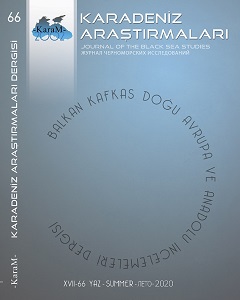Karadeniz Bölgesi ile Macaristan Kuman-Kıpçak Coğrafyasının Karşılaştırmalı Halk İnançları
Comparative Folk Beliefs for the Black Sea Region and Hungary Cuman-Kipchak Geography
Author(s): Ayşe ÖztürkSubject(s): Anthropology, Geography, Regional studies, Sociology of Culture
Published by: Karadeniz Araştırmaları Merkezi
Keywords: Cuman-Kipchaks; Black Sea; Hungary; Culture; Faith;
Summary/Abstract: The determination of the cultural fabric of a region is important because the cultural values disappear over time. This also reveals the partnership or differentiation of that region with the cultural fabric in different geographies. However, the cultural integrity history of the same communities in separate regions bridges the two regions politically and socially. In this study, the folk beliefs in the Black Sea Region and Hungarian Cuman-Kipchak geagraphy are tackled and similarities and differences are tried to be determined by making a comparison. The data obtained presents the presence of traces of old Turkish beliefs in the regions in common folk beliefs in the two regions. Cuman-Kipchak in Hungary lost many of their cultural values as a result of the influence of Christianity and the laws and prohibitions implemented by the Hungarian State. On the other hand, when we look at both geographies, it is seen that many beliefs and practices are similar, especially in transitional periods such as birth and death. The natural and spirituality symbols belonging to Turks such as sun beliefs and rituals, albastia, names for children, practices for not touching the evil eye, threshold blessing, rituals applied when death occurs, and cemeteries are reflections of a thousand-year-old accumulation.
Journal: Karadeniz Araştırmaları
- Issue Year: 2020
- Issue No: 66
- Page Range: 385-421
- Page Count: 37
- Language: Turkish

